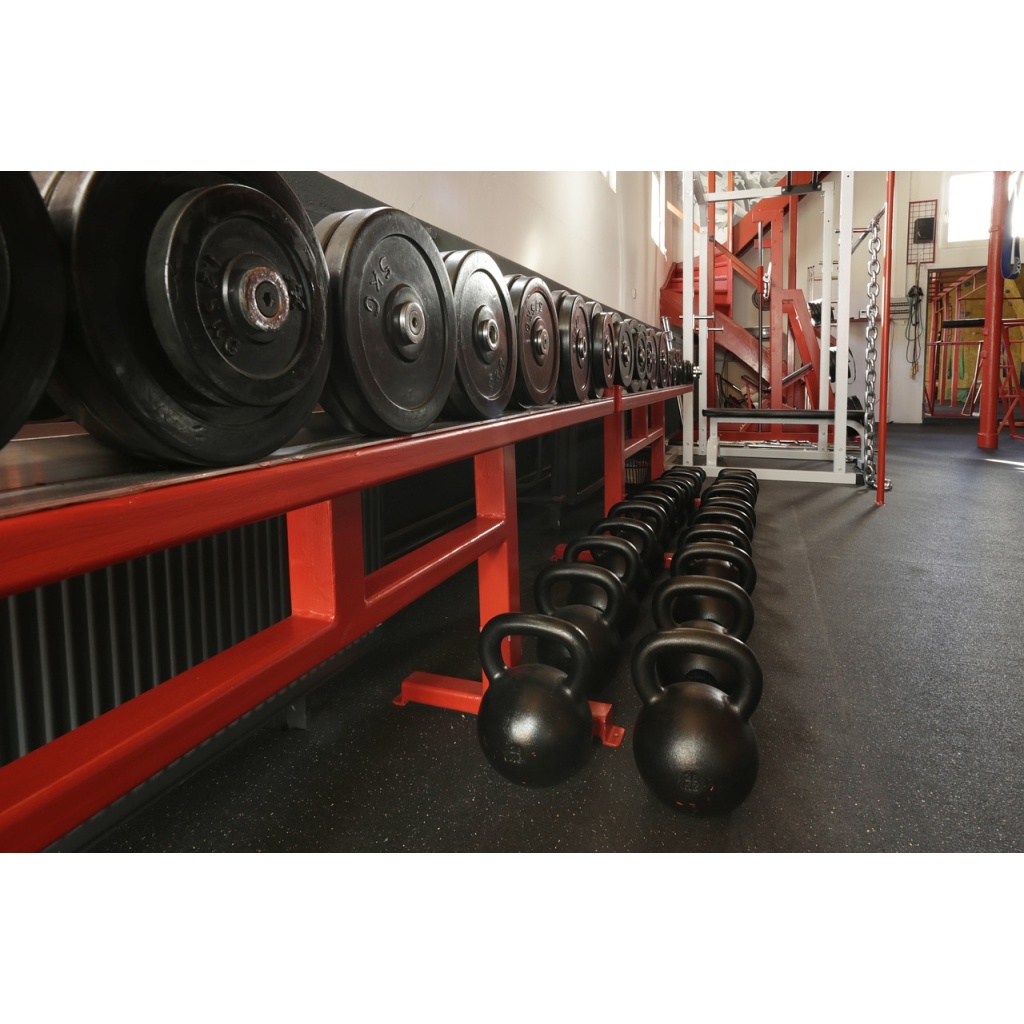8 Ways Strength Training Boosts Your Health and Fitness
Every workout plan should include strength training — and bigger muscles are just one of the health benefits you’ll reap.
By Chris Iliades, MDMedically Reviewed by Jennifer Payne, MD
Reviewed: April 12, 2023
Strength training goes a long way in terms of supporting bone health, making aerobic exercise more productive, preventing injury, and facilitating healthy aging.
If you knew that a certain type of exercise could benefit your heart, improve balance, strengthen bones and muscle, and help you lose or maintain weight, wouldn’t you want to get started? Well, studies show that strength training can provide all those benefits and more.
Strength training — also known as weight or resistance training — is physical activity designed to improve muscular strength and fitness by exercising a specific muscle or muscle group against external resistance, including free weights, weight machines, or your own body weight, according to the National Academy of Sports Medicine (NASM).
“The basic principle is to apply a load and overload the muscle so it needs to adapt and get stronger,” explains Neal Pire, CSCS, an ACSM-certified exercise physiologist and executive director of the Greater New York ACSM regional chapter.
And what’s important for everyone to know is that strength training is not just for bodybuilders and professional athletes. “Strength training is critical, not just for looking good and being strong, but for preventing the diseases of aging,” says Gabrielle Lyon, DO, a functional medicine practitioner in New York City and the founder of the Institute for Muscle-Centric Medicine, a functional medicine practice.
Regular strength or resistance training is good for people of all ages and fitness levels to help prevent the natural loss of lean muscle mass that comes with aging (the medical term for this loss is sarcopenia), per the Cleveland Clinic. It can also benefit people with chronic health conditions, like obesity, diabetes, or a heart condition, according to a research review published in 2019.
Tips for Working Out: Strength Training
Why is strength training so important? Listen to tips from Kelsey Wells, a trainer with the workout app Sweat and creator of the PWR weight training programs.
Strength training may even help you live longer: A meta-analysis published in February 2022 found that people who perform resistance training are less likely to die prematurely than those who don’t — even if aerobic workouts aren’t part of their routine.
At its heart, strength training is based on functional movements — lifting, pushing, pulling — in order to build muscle and coordination needed for everyday activities, explains Ramona Braganza, a Los Angeles–based celebrity personal trainer who is certified by the Canadian fitness education organization Canfitpro.
“For some people, the phrase strength training is intimidating, but it’s enhancing your ability to move safely and effectively in your life,” she says. For example: Your ability to lift something and put it on a shelf, carry your groceries in the door, bend down and pick something up, or get up after you’ve fallen down. “Getting up off the floor requires you to recruit muscles in your upper body, abs, legs, and glutes,” Braganza says.
The Physical Activity Guidelines for Americans from the U.S. Department of Health and Human Services (HHS) recommend children and adolescents ages 6 through 17 incorporate some strength training into their daily 60 minutes of physical activity three days per week. Adults should aim to do moderate or intense muscle-strengthening workouts that target all muscle groups at least two days per week.
And you need to rest in between strength training workouts.
“You don’t get better during workouts; you get better in between,” says Pire. “You should give yourself a day in between strength training to allow your body to recover and rebuild the muscle tissue from the stimulus of lifting or resistance.”
8 Ways Strength Training May Benefit Your Health
Besides the well-touted (and frequently Instagrammed) benefit of adding tone and definition to your muscles, how does strength training help? Here are just a few of the many ways:
- Strength Training Makes You Stronger and Fitter
This benefit is the obvious one, but it shouldn’t be overlooked. “Muscle strength is crucial in making it easier to do the things you need to do on a day-to-day basis,” Pire says — especially as we get older and naturally start to lose muscle.
Strength training is also called resistance training because it involves strengthening and toning your muscles by contracting them against a resisting force. According to the Encyclopedia of Behavioral Medicine, there are two types of resistance training:
- Isometric Resistance This involves contracting your muscles against a nonmoving object, such as against the floor in a pushup.
- Isotonic Strength Training This involves contracting your muscles through a range of motion, as in weight lifting.
- Strength Training Protects Bone Health and Muscle Mass
At around age 30 we start losing as much as 3 to 5 percent of lean muscle mass per decade thanks to aging, notes Harvard Health Publishing.
According to a study from 2017, just 30 minutes twice a week of high-intensity resistance and impact training was shown to improve functional performance, as well as bone density, structure, and strength in postmenopausal women with low bone mass — and it had no negative effects.
Likewise, the HHS physical activity guidelines note that, for everyone, muscle-strengthening activities help preserve or increase muscle mass, strength, and power, which are essential for bone, joint, and muscle health as we age.
- Strength Training Helps Your Body Burn Calories Efficiently
All exercise helps boost your metabolism (the rate your resting body burns calories throughout the day).
With both aerobic activity and strength training, your body continues to burn calories after strength training as it returns to its more restful state (in terms of energy exerted). It’s a process called “excess post-exercise oxygen consumption,” according to the American Council on Exercise (ACE).
But when you do strength, weight, or resistance training, your body demands more energy based on how much energy you’re exerting (meaning the tougher you’re working, the more energy is demanded). So you can amplify this effect depending on the amount of energy you put into the workout. That means more calories burned during the workout, and more calories burned after the workout, too, while your body is recovering to a resting state.
- Strength Training Helps Keep the Weight Off for Good
Because strength training boosts excess postexercise oxygen consumption more than aerobic exercise, it can also help exercisers boost weight loss more than if you were to just do aerobic exercise alone, Pire says. “[Resistance or strengthening exercise] keeps your metabolism active after exercising much longer than after an aerobic workout.”
That’s because lean tissue in general is more active tissue. “If you have more muscle mass, you’ll burn more calories — even in your sleep — than if you didn’t have that extra lean body mass,” he adds.
A study published in 2017 found that, compared with dieters who didn’t exercise and those who did only aerobic exercise, dieters who did strength training exercises four times a week for 18 months lost the most fat (about 18 pounds, compared with 10 pounds for non-exercisers and 16 pounds for aerobic exercisers).
You may even be able to further reduce body fat specifically when strength training is combined with reducing calories through diet. People who followed a combined full-body resistance training and diet over the course of four months reduced their fat mass while improving lean muscle mass better than either resistance training or dieting alone, concluded a small study published in 2018.
- Strength Training Helps You Develop Better Body Mechanics
Strength training also benefits your balance, coordination, and posture, according to past research.
One review from 2017, concluded that doing at least one resistance training session per week — performed alone or in a program with multiple different types of workouts — produced up to a 37 percent increase in muscle strength, a 7.5 percent increase in muscle mass, and a 58 percent increase in functional capacity (linked to risk of falls) in frail, elderly adults.
“Balance is dependent on the strength of the muscles that keep you on your feet,” Pire notes. “The stronger those muscles, the better your balance.”
- Strength Training Can Help With Chronic Disease Management (and Prevention)
Studies have documented that strength training can also help ease symptoms in people with many chronic conditions, including neuromuscular disorders, HIV, chronic obstructive pulmonary disease, and some cancers, among others. For the more than 30 million Americans with type 2 diabetes, strength training along with other healthy lifestyle changes can help improve glucose control, according to the Centers for Disease Control and Prevention and a study published in 2017.
And the 2019 review in Frontiers in Physiology suggested regular resistance training can also help prevent chronic mobility problems, heart disease, type 2 diabetes, and cancer.
- Strength Training Boosts Energy Levels and Improves Your Mood
Strength training has been found to be a legitimate treatment option (or add-on treatment) to quell symptoms of depression, according to a meta-analysis of 33 clinical trials published in 2018.
“All exercise boosts mood because it increases endorphins,” Pire says. But for strength training, additional research that’s looked at neurochemical and neuromuscular responses to such workouts offers further evidence it has a positive effect on the brain, he adds.
And there’s evidence that strength training may help you sleep better, too, according to a study from 2019. And we all know a better night’s sleep can go a long way in keeping your mood up.
- Strength Training Has Cardiovascular Health Benefits
Along with aerobic exercise, muscle-strengthening activities help improve blood pressure and reduce risk of hypertension and heart disease, according to HHS. And a systematic review of 38 randomized controlled trials published in 2021 concluded that resistance training combined with aerobic exercise is more effective than aerobic exercise alone in heart disease rehabilitation.
- Personal Training
12 Week Customized Personal Training Program
- Exercise Equipment
Bowflex Adjustable Dumbbells
- Exercise Equipment
Home Gym
- Exercise Equipment
Loop Exercise Bands
- Exercise Equipment
Resistance Bands






